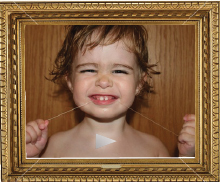Diagnodent Dental Laser Light
Diagnodent Dental Laser Light (Early cavity detection technology)
There is little double that lasers will be a standard in providing dental care in the future. At this time, the experimental nature and cost effectiveness for the patient have delayed our involvement in some areas of application.
However, there are two important areas of usage of high intensity light in our office which reduces times and cost of dental care, the diagnosis and the hardening of restoration material. We can use a dental diagnostic tool called diagnodent for early detection of a cavity. If a cavity is detected with the diagnodent, visual discovery, or via x-rays, we have the ability to bond restoration material to remaining tooth structure by curing (or hardening) the restorative material with an intense blue-colored light. Using this technique allows us to conserve tooth structure, gain final strength of a restoration in six seconds to avoid contamination, and easily evaluate the longevity of the restoration with x-rays for years to come.
Earliest Detection of a Cavity
The type of cavity that can occur on the chewing surface of the tooth is not visible by viewing x rays and sometimes not detectable visually. Although the advent of fluoride usage in drinking water and toothpastes has been a very effective way of reducing cavities on the smooth surfaces of teeth, the hardening of the outer “shell” of the tooth can reduce the ability to manually detect the smallest cavity in the grooves.
In clean teeth without fillings or sealants, we can use an instrument called a diagnodent to determine where bacteria has broken completely through enamel into the dentin, the classic definition of a ‘cavity.”
The method by which the diagnodent works is simply by noting the difference between the laser light which shines into a groove and the laser light which reflects. Because bacterial by-products absorb certain amounts (wavelengths) of light, when some light is not reflected, this instrument notices, makes a noise and shows a number.
As you may already know or have read, conservation of tooth structure is an office objective, and the diagnodent saves tooth structure by early detection, which can mean the difference between small and large restorations, or even whether a crown may or may not be needed in the future.


